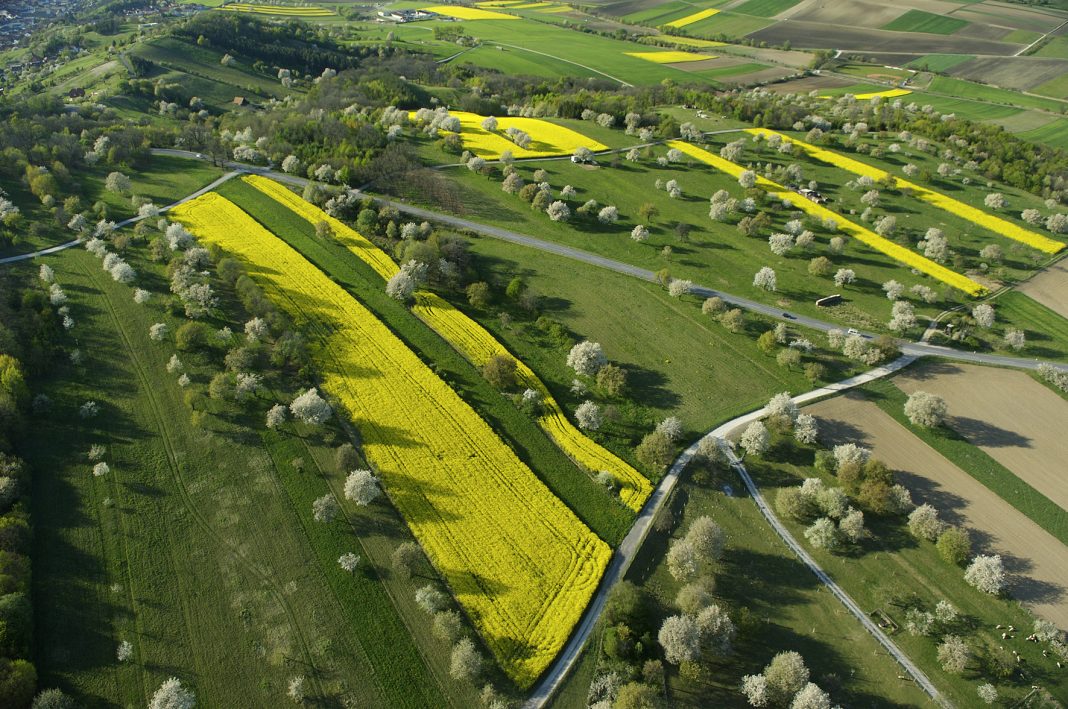Mita Drius and Luana Silveri from the Free University of Bozen-Bolzano, explain fostering green infrastructure for ecosystem resilience in Alpine regions. The FRACTAL model, we hear, is a bottom-up all-round approach
The context: bridging gaps in ecosystem connectivity
In the last century, human population growth and industrial development have led to the depletion of natural resources, ecosystem degradation, and a worrying change in global climatic conditions. Habitat and ecosystem fragmentation due to land use change is recognised as one of the most striking threats to biodiversity. Fragmentation of habitats alters species’ normal life cycle and ecology by preventing them from reaching their migration and dispersal destinations.
Moreover, a fragmented ecosystem cannot provide the human population with fundamental ecosystem services, such as pollination, food, air quality, carbon sequestration, flood management, water treatment, local climate regulation, soil erosion prevention, etc.
As the negative impacts of fragmentation have become apparent, the importance of maintaining ecological connectivity within ecosystems and landscapes at different levels of naturalness, including between protected areas and at the rural-urban interface, has been increasingly recognised. The need for healthy ecosystems is now widely acknowledged on the European environmental agenda, not just to halt the loss of biodiversity, but also to benefit from the many valuable services they provide.
In the Alpine context, the impact of climate change is more severe, having harsh effects on the vulnerability of natural capital and, consequently, on that of local communities. One of the most effective solutions to face these challenges is promoting Green Infrastructure at local scale. Green Infrastructure includes natural and man-made elements (such as reforestation zones, green bridges, green urban areas, rain gardens, high nature value farmland and forest areas), that provide a wide array of ecosystem services and support biodiversity.
Green Infrastructure should be strategically incorporated into land use planning, recognising its role in maintaining ecological balance and promoting human well-being. Unfortunately, the practical implementation of Green Infrastructure locally in the Alps is still limited. This is because of a lack of communication and knowledge transfer at the community level, both in the political and educational sectors.
The solution: FRACTAL’s vision for change
The Interreg Alpine Space FRACTAL (FosteRing green infrAstruCTure in the Alps) project promotes the improvement of green space connectivity in small urban and peri-urban areas. Based on transalpine cooperation between the Free University of Bozen-Bolzano (Italy), the National Institute of Biology (Slovenia), the National Park Triglav (Slovenia) and the Business Agency Burgenland (Austria), FRACTAL aims to propel alpine communities into active participation in the local implementation of Green Infrastructure, fostering a transformative connection among nature, education, and governance. The project introduces a ground-breaking approach by standardising planning requirements for Green Infrastructure at the municipality level, culminating in a “GI Pact” signed and adopted by municipalities across the Alps. Simultaneously, an innovative educational toolkit spanning primary to high school levels will instil a widely accepted vision of Green Infrastructure and its benefits in the Alpine Space.
How FRACTAL works: transformative steps toward sustainability
FRACTAL starts by unifying the vision of Alpine communities through a standardised planning process. The “transalpine GI Pact” emerges as a collective commitment, creating a shared understanding of sustainable development. By signing the document, each municipality commits itself to implement a specific green infrastructure in a defined time frame. Citizens and associations are also encouraged to sign the Pact, engaging themselves in, e.g., improving their private and community gardens.
The project pioneers an educational toolkit tailored to diverse age groups, enlightening young and adult citizens, farmers, future farmers, and beekeepers. This holistic approach ensures a broad spectrum of society is informed and actively involved in fostering change. The educational toolkit, translated into four languages and easily accessible, aims to increase awareness of the role and relevance of GI in supporting ecosystems and their services, and it includes a board game, infographics, a short film, and an illustrated booklet.
The infographic and the illustrated booklet (9-12 y) will guide the reader on a colourful trip to understand what GIs are and why they represent a crucial solution for our challenging future. Although GIs can have some “interesting” side effects on humans, they are still a great solution to cope with climate change issues.
The board game (12) is a serious game focused on highlighting the tight dependence of ecosystem services on GI solutions. An educational module will be elaborated and tested at school to target teenagers, combining theoretical concepts with active didactic approaches.
FRACTAL also foresees two large outreach initiatives in each partner country: – The “GI Day”, a 1-day dedicated to planting GI in your town/village, engaging citizens and public administrations in demonstration activities; and the “Regreen festival”, a sizeable 2-day festival dedicated to the multiple benefits of GI with conferences, thematic entertainment for kids, and demonstration activities also with beekeepers and pollinator-friendly farmers. Each project partner will organise its own events and participate in those of the other project partners.
Inspiring change, paving the way forward
FRACTAL’s participatory methodology and bottom-up approach ensure a ripple effect beyond the immediate project region. The collaborative effort transforms the existing network of stakeholders within the transnational consortium and extends its influence on communities beyond the Alps. In a world where ecosystems are under constant threat, FRACTAL stands as a testament to the power of collective action. Bridging the gap in Alpine ecosystems is not just a project of what can be achieved when communities unite for a common cause; it’s a movement.

This work is licensed under Creative Commons Attribution-NonCommercial-NoDerivatives 4.0 International.


